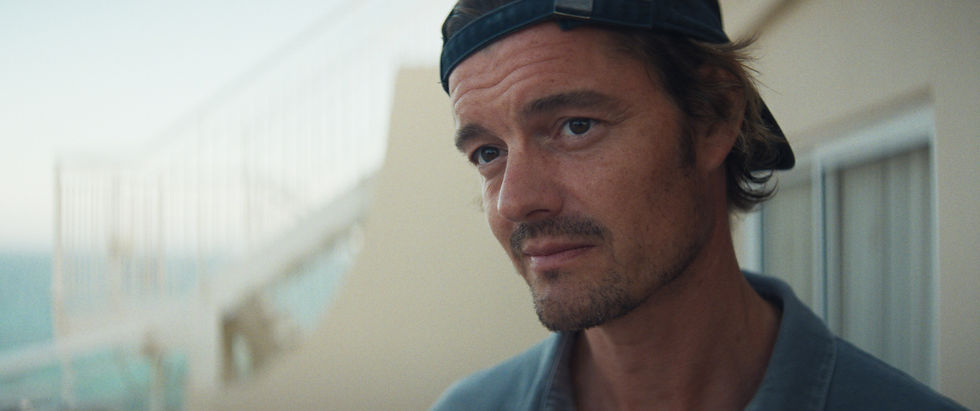AILEY
- Kathleen Bondar

- Jan 3, 2022
- 3 min read
Updated: Sep 10, 2022
A DOCUMENTARY FILM BY JAMILA WIGNOT
CERTIFICATE TBC / RUNNING TIME 90 MINUTES IN UK & IRISH CINEMAS AND ON DEMAND 7TH JANUARY 2022

AILEY director Q&A hosted by Bonnie Greer screens in cinemas on 4th January, book now: www.aileyfilm.co.uk
REVIEW by KATHLEEN BONDAR
Jamila Wignot’s lyrical and edifying documentary traces the rise of the pioneering contemporary dance choreographer Alvin Ailey who in 1958 at the age of just twenty-seven brought African American dance to the world stage when he formed the Alvin Ailey American Dance Theatre. There are two significant marvels to this story. One is the man himself: “A working-class, gay, Black man, he rose to prominence in a society that made every effort to exclude him.” The other is the dance Ailey created earning him the deserved tribute of one of the most important choreographers in the history of modern dance.
The story of Ailey is delivered through footage of his work as a choreographer and artistic director with photographs of his early years with his beloved mother – a single woman often homeless who worked in the cotton fields with her small son by her side. There is a
series of heartfelt recollections from leading dancers who went on to carry the torch of African American dance becoming artistic directors of the ground-breaking company themselves: Carmen de Lafallade, Don Martin, Judith Jamison, George Faison and Masazumi Chaya amongst many other glitterati of contemporary dance.
Ailey brings Alvin Ailey’s legacy into the present with behind-the-scenes clips of hip-hop choreographer Rennie Harris’s new dance inspired by Ailey’s life. But what is most poignant is the overlay of never-before-heard audio interviews with Ailey during the last year of his life in 1989 when he was dying of AIDS.
PBS PHOTOGRAPHS OF ALVIN AILEY
Interspersed with footage from his birthplace, 1930s Texas, Alvin’s crackling voice-over describes his mother. “I remember my mother on her knees scrubbing white folks’ floors. Those memories go through my head all the time and she was one of the most beautiful women like Lena Horne.”
He describes going to New York and seeing professional black dancers for the first time and the Ballet Russe of Monte Carlo. From this, Ailey moved from gymnastics to a meteoric rise as a dancer. With few opportunities for black dancers, Ailey eventually formed his company and took the world by storm producing many shows including Revelations 1960 (a performance like a ballet of baptism), The River 1970 (in which oppression is translated through the emotion of dance) and Cry1971 dedicated as a birthday gift to his mother and all black women. The company toured worldwide. When it reached Australia, Ailey recalls only 25 people attended the first performance but “they went nuts”. After that, performances packed out. They toured the States, Europe, Paris, London and Russia.
Ailey’s personal life was difficult for him. Ailey remembers the death of the dancer Joyce Trisler. “Agony left a hole in me.” He created Memoria 1979, a ballet in memory of Trisler. “Joyce was 48 years old and I thought if Joyce can die then I can die. So I had better live quickly. I met Abdullah in Paris. I brought Abdullah to New York to live with me and this was going to be the perfect relationship. He was very attractive, and people would go after him in the street which made me very jealous, but he would always come back.” Except one day at a party “he went down the fire escape and did not come back.”
Later in life, Ailey had a nervous breakdown. “The agony of coming from where I came from and then dancing on the Champs Elysee. The contrast of all that. On the one hand was a darkness when you feel like you were just nobody -nothing. On the other hand, you are the king on top of the world.”
Ailey’s childhood deprivation and the legacy of Black oppression rings loudly throughout the documentary with the added discrimination against his sexuality deeply held by his own race and all society. Ailey deployed dance as a form of protest as much as emotion. As one dancer explains, “This was our march to freedom.” Dance is described as Ailey’s catharsis. It is poignant however, that Ailey could not use dance to express his sexuality as directly. There are a range of comments from his peers: “He was possessed”; “He was very private”; “He was searching for poetry”; “You see a man, but you don’t know a man.” One dancer attributes choreography as his catharsis. “Sometimes I felt like the woman in the black dress was really him (in Michaela).” In Wignot’s documentary, however, a fuller and deeper picture of Alvin Ailey is finally, and beautifully, realised.
@Bonnie_Greer








